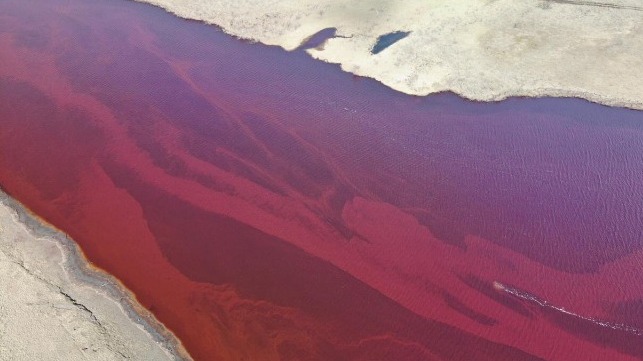Storage Tank Spills Thousands of Tonnes of Fuel into Siberian River

On May 29, a spill from a diesel tank at the remote Siberian industrial city of Norilsk released about 20,000 tons of petroleum, including an estimated 15,000 tons that drained into a nearby river system.
The spill occurred at a heating and power station on the outskirts of the city, and operator Nornickel said that it was caused by a "sudden sinking of supporting posts in the basement of the storage tank."
Nornickel is conducting joint aerial surveillance of the spill with Russian environmental agency Rosprirodnadzor, and the Russian Ministry of Transportation has mobilized a spill containment and cleanup team out of Murmansk. As of Wednesday, the company said that it had recovered about 80 tonnes of fuel from the river.
Norilsk's power division says that it is now inspecting all of its other tanks, with particular attention to any sinking foundations in permafrost.
Russian President Vladimir Putin has declared a federal state of emergency for the region. In a televised discussion with company officials, Putin expressed displeasure that the Russian government had only learned about the accident two days after it happened. "Are we going to learn about emergency situations from social media?” he said.
According to the New York Times, the Russian Investigative Committee has detained the manager of the power plant and has launched a criminal investigation.
Norilsk is a heavily industrialized city built and operated for Norilsk Nickel's mining and smelting operations, and it has a decades-long legacy of pollution. The area surrounding the city - visibly including the area of the spill - is lacking in vegetation, a phenomenon attributed to high sulfur dioxide emissions from Nornickel's plant.
Another nearby river, the Daldykan, periodically turns bright red. In one instance in 2016, Norilsk admitted that one of its mine tailing dikes had overflowed, resulting in "short-term river color staining with iron salts."
